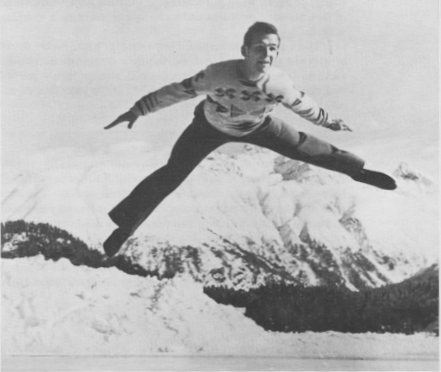How slippery is ice?
Interestingly, not very!
In 2000, physicist Hendrik Bluhm used atomic-force microscopes to determine that the coefficient of friction of dry ice (that is, completely frozen water, not to be confused with frozen CO2) is 0.6. This is quite a large amount of friction, comparable to the static coefficient of friction of clean bricks on wood. In 1992, de Koning, a physicist who did a great deal of research into speed skating, determined that the average coefficient of friction during actual ice skating sessions is between 0.0046 and 0.0059
.
If ice really has a high μ, this should be no problem.
Where does the other 0.5954 of μ go?
That question stumped the physics community for hundreds of years. For many, many years a widely accepted theory was that ice skating was possible due to pressure melting. Since a skater's weight spreads across a very small area on ice skates, it makes sense that the pressure across the blade will be very large, since P=F/A (or P=mg/bladeLength*bladeWidth). However, this simply does not add up if you calculate out these pressures. Jhon Joly famously calculated a blade pressure of 466 atm (which, according to calculations with the above formula, would require a laughably thin blade). However, this theory had an irreconcilable hole with physical evidence: Joly's calculations stated that pressure melting would only allow ice skating to occur down to -3.5 degrees C, which is of course nonsense.
Another Theory quite similar to pressure melting was that of the friction between the blade and ice creating a thin layer of slippery water due to heat. This was proposed by Frank Bowden in 1939, but it also had holes. If this were the only valid explanation, why would you slip on ice when gently placing your foot down on a sheet of smooth ice on a sidewalk, despite little frictional interaction?
The first physicist to propose the correct answer was none other than Michael Faraday! In 1852, he proposed that the outer surface of a very cold and very frozen ice block can still have a thin layer of liquid on it. Although he could not prove it, Harald Reichert conducted experiments in 2004 that identified this liquid layer on ice, which is actually not technically fully liquid, called a semisolid. This layer is believed to form because there are fewer forces holding the outermost layer of ice together compared to those in the block. The pressure and friction theories of ice skating are not complete nonsense though, as those forces can "melt" the semisolid into a complete liquid, making the slick ice that ice skaters require!
